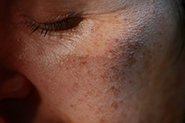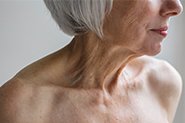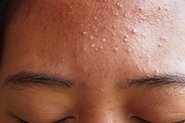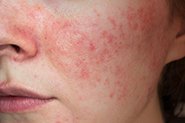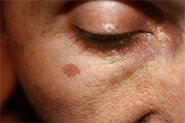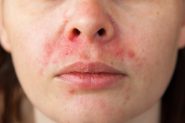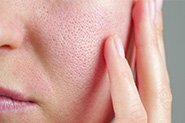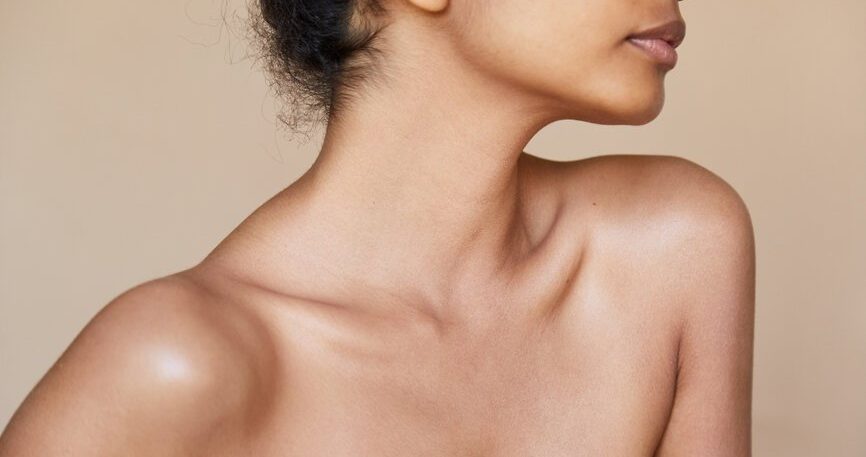
What does anti-ageing really mean?
Ageing is just living – we’re all doing it, all the time. So, although we’re not fans of the term ‘anti-ageing’ we understand there is a shared understanding of what it means in terms of skincare.
Australia has more women (the largest consumer of skincare products) aged 45 or older than under 30.
Our over 50s market holds 50 per cent of Australia’s private wealth, and 46 per cent of disposable income.
Women aged 55+ are the largest consumer demographic in multibrand beauty stores (e-commerce and stand-alone) worldwide.
These women want intelligent, high-performing, age management solutions. Beauty has become a serious business in this market – it is shaking off the shackles of superficiality and becoming an essential component of emotional and mental health as we strive for longevity and quality of life.
There is also an increasing awareness of the role of UV photodamage as the biggest contributor to skin ageing, particularly from sun exposure in our teens and early 20s. So ‘anti-ageing’ is no longer just the domain of the 45+ market – women (and men) in their 20s understand the role of skin-ageing prevention strategies more than ever before.
Skin ages as a result of 2 processes:
1. Intrinsic aging – genetically programmed, happens simply with the passage of time. Characterised by collagen loss, increasingly dry/fragile skin and reduced skin barrier function. Heavily impacted by declining oestrogen levels in women (oestrogen levels peak in our mid- to late 20s and slowly decline to 50% by age 50, then bottom out post-menopause).
2. Extrinisic aging – results from external lifestyle factors such as UV exposure, diet, smoking, stress, pollution. Of these, UV exposure is the most important, contributing 80-90% of the signs we associate with aging skin.
Chronic sun exposure:
Tricks skin into overproducing skin cells to thicken and protect itself from the sun. The resulting appearance is rough, thickened, less glow-y skin.
Triggers pigment production and the appearance of the dreaded ‘age spots’ and uneven skin tone (if you don’t believe me, compare the skin on your torso that doesn’t see as much sun vs the skin on your arms, chest, face and hands)
Causes dilated and broken blood vessels (called ‘telangiectasia’ or ‘spider veins’)
Upregulates hormones in the skin that break down collagen and elastin – contributing to deeper wrinkles and saggy skin
Damages skin cell DNA both directly, and indirectly by producing DNA-damaging Reactive Oxygen Species, aka ‘free radicals’. At the same time, it depletes our skin’s own supply of antioxidants (like vitamin C, L-ascorbic acid, Coenzyme Q10 and others) so they can’t prevent free radical damage.
What are the most effective ingredients we should look out for in our anti-ageing products?
There are 2 major ingredients that address most of these factors:
The least sexy and inexpensive, but most important anti-ageing product is sunscreen. Invest time and effort in finding one that you will use every day, use enough of, and reapply. And seek out advice on how to use it properly for maximum protection (a little sunscreen is not better than none at all).
Collagen loss, dry, dull, fragile, rough and saggy skin can be prevented and minimised with the powerful antioxidant, vitamin A . We recommend the prescription variety for its basis in scientific evidence, long-term safety profile and increased efficacy vs over-the-counter retinols. Prescription-strength retinoids are the only evidence-based anti-aging topical ingredient that can stimulate skin cell proliferation, increase HA, elastin & collagen synthesis, promote changes in the skin that help with wound healing and repair of sun damage, and prevent wrinkle formation. So, no matter the cause, anyone concerned with aging skin should be thinking of adding this gold standard topical treatment to their routine. When your skin can tolerate using this regularly, you can then add in other minor players like vitamin C (in the form of L-ascorbic acid) and low-strength AHAs, but these are optional.
A note on anti-ageing moisturisers and serums…
Moisturisers and most serums are not anti-aging (exception: antioxidants like L-ascorbic acid).
Instead, they work to temporarily reduce fine lines and wrinkles by introducing and holding water in the skin, thereby plumping out wrinkles. This is helpful to increase comfort levels in dry, fragile skin, but isn’t anti-aging. There is a lot of excitement about newer anti-aging ingredients like stem cells, peptides and growth factors, but to-date, there isn’t sufficient quality scientific evidence to justify their use over more evidence-based ingredients like those listed earlier. Like everyone, we’re excited for anti-aging newness, as long as it is based on good quality evidence!
How do you know if your anti-ageing products are really working?
Good things take time, especially when it comes to retinoids and sunscreen – you’ll need at least 6-12 months of consistent and correct use. But you should be noticing positive changes in your skin during this time. We recommend our patients take photographs every 3 months to track these changes, as subtle incremental change can be difficult to spot.
The best indication that you’re doing something right is when people start to compliment your skin!
For a more detailed look at the timeline for how long retinoids take to work on lines and wrinkles CLICK HERE
When should you begin using anti-ageing products?
We should all be using sunscreen as early as possible – and role modelling this for younger generations.
Early signs of sun damage can be visible by your early 20s (a 2019 Cancer Council study showed that 1 in 4 Aussie teens are still getting sunburnt weekly during summer), so this is the time to start a retinoid to repair this damage, and prevent it worsening.
What are the key steps in every anti-ageing routine?
When it comes to designing an exact routine, everyone’s preferences, lifestyle, budget and concerns/goals are different, but as a general guide, a good daily routine should look like this:
1. AM: Cleanse (optional for balanced or dry skin) + Moisturise + Protect (Sunscreen)*
2. PM: Cleanse + Treat (Retinoid) + Moisturise
3. WEEKLY: Targeted Treat (this can be a hydrating mask, or a higher strength exfoliating acid. Just don’t do everything at once).
*If you want to add a vitamin C serum for added antioxidant protection, layer it under your sunscreen.
Do anti-ageing foods exist?
Diet is one of the extrinsic factors that contributes to skin health, and a healthy diet is always a good idea where your overall health is concerned. But to put it into perspective – no amount of green juice will compensate for lack of sunscreen or hormones.
There’s not a lot of good quality science behind many oral supplements, but low molecular-weight hydrolysed collagen supplements do have a significant and growing body of science (including the gold standard clinical trials) to support their use as part of an overall skin anti-aging strategy. Click HERE for part 1 of the science behind collagen supplements.
What are our go-to anti-ageing products?
1. Sunscreens: La Roche-Posay Anthelios Invisible Fluid or UltraViolette Supreme Screen
2. Retinoid: Qr8 MediSkin custom prescription
3. Cleanser: Avene Xeracalm Cleansing Oil
4. Moisturiser: CeraVe Moisturising Cream
5. Vitamin C: Skinceuticals C E Ferulic
6. Hydrating Mask: La Roche-Posay Cicaplast B5 Mask
7. Collagen Supplement: Vida Glow Marine Collagen (3-6g daily)
8. Weekly exfoliant: Skinceuticals Glycolic 10 Renew Overnight or Augustinus Bader The Essence
This article was originally written for Vogue Australia. Click HERE to view.
READY TO GET STARTED WITH PRESCRIPTION RETINOID TREATMENT?
CLICK HERE TO BOOK A CONSULT WITH OUR EXPERIENCED MEDICAL TEAM.


